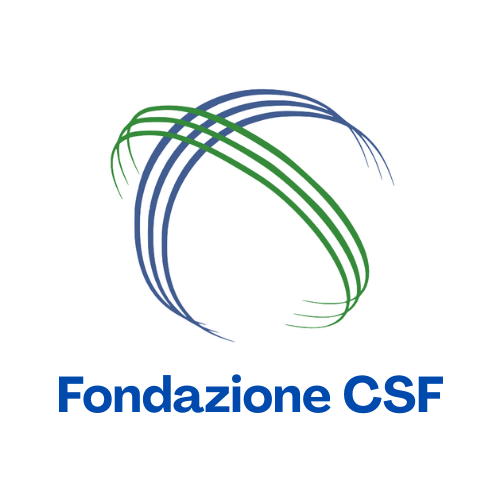Olimpia Fontana / 25 settembre 2025
Commentary no. 010/2025 NS
In his speech at the High-Level Conference organized by the European Commission on the progress of the well-known Report that bears his name, Mario Draghi was clear: “Our growth model is fading. Vulnerabilities are mounting. And there is no clear path to finance the investments we need.” Yet a year ago his message was explicit: the EU must be able to grow, innovate, and achieve strategic autonomy in the technologies of the future. To do so requires a radical change: not just adjustments, but deep reforms, political coordination, massive investments, and more effective governance. A European industrial policy is the tool rediscovered by the EU to respond to fierce competition—and inevitable tensions—from the United States and China. But within the current institutional framework of European economic policy, this weapon rests on a weak pillar: the coordination of voluntary national initiatives.
As Draghi emphasizes, the EU has been trapped for too long in a double bind: on the one hand relying on uncoordinated national efforts, on the other placing total faith in the idea that market forces alone could create new sectors. But if the first approach cannot deliver large-scale results in critical sectors, the second proves equally illusory, especially when other global actors intervene massively in the market and alter competition conditions. Draghi’s warning concerns not only defense and heavy industry, but also cutting-edge technologies that will shape the future.
In this field, the EU is slowly awakening from the inertia that for decades prevented a real industrial policy, thanks to a special clause of the Treaty (Art. 107(3)(b) TFEU), on Important Projects of Common European Interest (IPCEIs). These are broad transnational initiatives, recognized by the European Commission, through which Member States are allowed to grant State aid in key highly innovative sectors (e.g. batteries, hydrogen, microelectronics, cloud) by derogating from the usual rules. Since 2018, 11 IPCEIs have been launched, with the participation of 23 Member States, 257 companies, for a total of €37 billion in public support. Given the importance, urgency, and complexity of sustaining existing IPCEIs and launching new ones, since 2021 the Commission has undertaken several actions not only to strengthen their use but above all to make them more transparent, inclusive, and faster.
Although an important step forward in overcoming the discipline on State Aid, IPCEIs are essentially a tool for linking and coordinating a multitude of small, medium, and large selected companies that are explicitly granted the green light for public funding. Bringing together actors with a high propensity for innovation but with different financial and administrative capacities, from Member States whose governments have different fiscal margins, is the challenge of this enormous coordination effort.
As this is a controversial subject due to the conflict between industrial policy and competition policy (public intervention versus risk of fragmentation), the Commission first clarified with the 2021 Communication the eligibility and compatibility criteria to approve State aid under participation in an IPCEI, which must: contribute to a strategic EU objective; demonstrate that it addresses serious market or systemic failures (or social challenges) that, without aid, would prevent its implementation; involve at least four Member States. An important requirement is that it must provide benefits not only to the funding Member States or the participating companies, but to a broader portion of the Union.
The concept of a public good is therefore at the basis of the decision to launch an IPCEI: although not “pure” European public goods, they are based on the logic of a European public good, because they aim to create value and benefits that go well beyond the company or State participating in the project. For participants there is mandatory commitment to share and transfer the knowledge developed thanks to State aid from the IPCEI along the entire value chain, both upstream and downstream. In 2023, the Joint European Forum for IPCEI (JEF) was created, a special discussion group involving Commission services and Member State representatives (for Italy, the Ministry of Enterprises and Made in Italy). Through the JEF, best practices have been defined for the various stages of the IPCEI process, based on the experience gained so far. The clear objective is to rationalize and streamline a highly complex process and attempt to respond to the growing frustration felt by European citizens and businesses about the slowness—both decision-making and administrative—of the EU. In addition, the forum identifies future strategic IPCEIs, based on indications from Member States. It is worth noting that projects in the fields of biotechnology, clean, connected and autonomous vehicles, and critical raw materials are under discussion.
As for governance, the procedure to implement an IPCEI is complex. The initial phase consists of identifying a new IPCEI and its subsequent communication by the participating countries. This is followed by the design phase, in which each Member State launches the selection of interested actors at the national level. Companies and research centers are invited to matchmaking events to foster collaborations and identify synergies with potential participants from other participating countries. At this stage, the selected companies and national authorities prepare documents such as the project portfolio and funding gap projections. The next step is the pre-notification by the Commission of the documentation received, followed, after various adjustments, by the actual notification of the entire IPCEI. Here the EU gives the green light to the requested State aid. It is then up to the Member States to grant and disburse the approved aid to their domestic companies, provided that disbursement depends on the availability of funds in the national budget.
The overall picture therefore shows that in the notification and authorization phase the Commission plays a central role, but in fact the identification, selection, and implementation of projects are in the hands of national authorities and domestic companies. Although the EU has sought to rationalize and codify the entire process by establishing guidelines, templates, and support services to make it smoother and faster, the nature of European industrial policy remains that of coordinating various national initiatives, based on the willingness to cooperate, the administrative capacities and fiscal margins of Member States, as well as the growth potential of companies, which in turn are affected by a fragmented European capital market and a lack of stable and predictable internal demand.
Finally, the issue of financing IPCEI projects remains, some of which have also benefited from partial European co-financing during the NGEU. In the coming weeks, new JEF meetings will be held, the steering committee. On that occasion, a mapping of existing funds and programs at European level that can be used to co-finance IPCEI projects will be carried out. However, without the availability of additional resources dedicated to IPCEIs, it will be difficult to achieve the set objectives. An example is the case of funding associated with the Chips Act. The European Court of Auditors has considered the total level of investments linked to the semiconductor strategy insufficient, although it acknowledges the positive role of IPCEIs in supporting the industry. Given the nature of IPCEIs as European public goods, greater financing and broader management of the entire process at the central European level could help reduce slowness and inefficiencies.
*Senior Visiting Fellow FCSF

 En
En  It
It 



